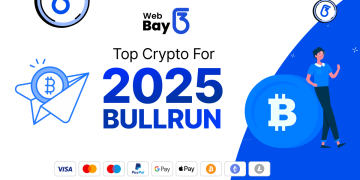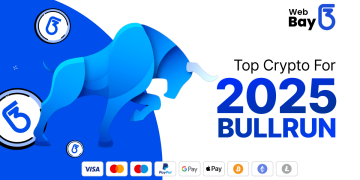What Is GameFi?
GameFi is a portmanteau of the terms gaming and decentralized finance (DeFi). It refers to integrating blockchain technology into the gaming world for monetization and securing in-game assets.
How GameFi Works
The possibility of monetizing gaming is desirable for small game publishers looking for an edge in the competitive gaming industry. Small publishers will issue tokens to monetize their games, usually based on the ERC-20 standard within the Ethereum network. These tokens are issued as part of an ICO. There, their role is to finance the cost of developing a game.
The games developed in the GameFi sector have smart contract capabilities baked into them, automating the transfer of tokens to gamers in exchange for payment using existing crypto coins. When the game eventually launches, these tokens will often have utility within the token.
In-Game Assets with Real-World Value
Within the GameFi world, rewards take many forms. Besides cryptocurrencies, gamers can receive in-game assets such as weapons, avatars, and costumes. These in-game assets are often in the form of NFTs minted and secured on a public blockchain. Their existence as NFTs means they can be traded on secondary NFT marketplaces. In-game assets offer some benefits to players, such as providing access to special rewards. However, some in-game assets have no use beyond being visually pleasing.
Depending on the game mechanics, players can earn rewards when they complete tasks, battle with other players, or create structures on the plots of land. Some games also have a mechanism for generating a passive income without playing games. For instance, players can earn by staking tokens or lending their in-game assets to other players.
Play-to Earn Model
At the heart of all GameFi projects is the play-to-earn model (P2E). This is the opposite of the current pay-to-play (P2P) model, where players have to pay real-world money to access higher levels and better items within a game. For instance, most mainstream first-person shooter games require players to buy a license or subscription before they can play.
For most ordinary players, gaming will not generate any financial rewards. Besides, they do not own any in-game items even after spending hours and resources playing the game. The centralized company in charge of the game can upgrade the code one day, rendering all items gathered thus far worthless. With the P2E model, gamers have complete control over in-game items. Besides, there are numerous opportunities for them to reap real-world financial rewards.
It is worth noting that not all play-to-earn (P2E) games are free to play. Some games require players to make a small initial investment in purchasing an NFT to begin participating in the game’s economy. As such, it is up to players to make their assessment. If the initial investment required is enormous, there is a high risk of never seeing any returns. Additionally, not all P2E games are fully decentralized. In some games, the developers retain outsized control over the in-game items. Ensure you evaluate each game individually before settling on the one you wish to play for rewards.
The Most Popular GameFi Projects
Here is a summary of some of the most popular GameFi projects in 2022.
DeFi Kingdoms
DeFi Kingdoms is a game and a decentralized exchange. It does not feature traditional gameplay elements such as missions, free play, and battles. Its GameFi element comes from the fact that players collect yield from the DeFi Kingdoms liquidity pools. Players stake the JEWEL in-game token in the liquidity pools and earn an annual percentage yield, which can sometimes be over 1000%. If you want to understand how GameFi works, this is a great place to get started.
Decentraland (MANA)
Decentraland has emerged as one of the most popular GameFi crypto projects in 2022. The project launched after a $24 million ICO that was held in 2017, when most people did not understand what is GameFi. It launched a close beta in 2019 and was open to the public in 2020. Since then, it has grown to define GameFi meaning.
In this game, there are two tokens, which are MANA and LAND. MANA is an ERC-20 token, which has to be burned to acquire LAND tokens, which are ERC-721 NFTs. MANA can be used for various purposes in the game such as buying avatars, skins, names, and more. It features a map arranged into 300×300 units of land, which are around 90,000 in total.
Axie Infinity (AXS)
Axie Infinity is one of the most popular GameFi projects in the world. It has set the gold standard for how GameFi works. It was designed as a blockchain-based battle game. In the game, players are allowed to collect, breed, raise, and battle creatures called Axies.
Axies take various forms built out of over 500 different body parts. There are different classes of creatures; with parts having varying levels of rarity. Axies can have a combination of various parts, which makes them highly valuable the rarer they are.
The project features an ERC-20 governance token called Axie Infinity Shards (AXS). Its goal is to use the AXS to align the incentives of players with those of developers in creative ways. Players have to be incentivized to hold onto their tokens to claim additional rewards thus creating a sustainable ecosystem.
Splinterlands
Splitnerlands is a great GameFi game for those that are into trading cards. It was built on the Hive blockchain, which was designed specifically for this project. The result is that sPlinterlands has grown into one of the biggest DApps in the world.
To succeed at playing Splinterlands, it is important to have a plan. Before starting, you need to have a plan. That means you decide whether you want to make money, play for fun, or gather resources. Several in-game tournaments occur regularly. The governance token SPS is the best part of this game since it is free to begin at the basic level. Players are advised to spend $10 to have access to the whole game.
Benji Bananas
Benji Bananas began as a free-to-play mobile game that did not have a blockchain layer. However, Animoca Brands decided to add play-to-earn (P2E) functionality to the game. It is a simple game where players swing from vine to vine, passing obstacles, and try to remain off the ground for as long as they can. The longer they stay off the ground, the more they win.
Rewards are paid out as PRIMATE, which players can swap for ApeCoin (APE), the digital token created by Yuga Labs. A membership pass was recently added that lets PRIMATE holders earn special rewards when they play the game.






















